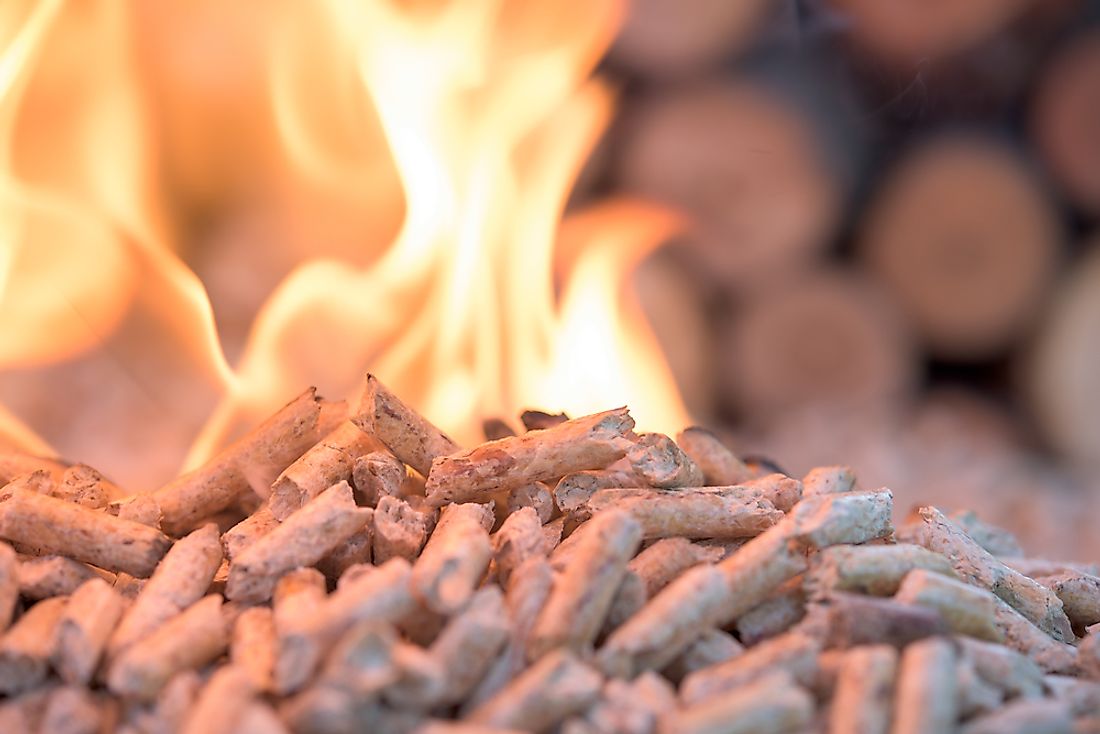What is Biomass? Which Countries Burn the Most Biomass?

Ever since humanity harnessed the power of fire, it has depended upon it to cook, stay warm, and provide energy for other uses. Through many parts of the third world, the traditional practice of burning biomass and waste to produce heat and other forms of energy continues to help meet the need of such arising from a lack of reliable modern energy services. Though lower income regions are beginning to use more modern forms of energy, biomass and waste still remain a common source of energy, and account for 14% of worldwide energy output.
Areas Where Biomass and Waste are Used as a Primary Source of Energy
Wood, forestry residue, animal dung, human excrement, and agricultural residues in the form of crop waste like stalks and coconut husks are used. Though these are renewable energy sources, the stoves used for burning these fuels are the inefficient 'three stone stoves'. These stoves have an energy efficiency of only 10%, so 90% of the biomass burnt is wasted. Most of the biomass is used as the primary energy source by people for heating and cooking, ranging from 65% in Haiti, 72% in Kenya, 78% in Democratic Republic of Congo, 81.5% in Nigeria, 85% in Tanzania, to 89% in Kenya and Niger. In all the countries, rural households are more dependent on biomass than peri-urban and urban areas for cooking. Its use in rural households varies in different countries, from 99% of the population in Ethiopia, to 95% in Mozambique. While in urban Ethiopia biomass is used by 84% of the population. In addition, 12% and 6% of the biomass is used for transportation in Haiti and Nepal, respectively. Industrial use of biomass for heating is prevalent in Haiti (4%), Nepal (6%), Myanmar (20%) and Sudan (20%). These are usually small scale industries like sugar mills, sawmills, brick production, and tobacco curing. Other users of biomass are commercial services like restaurants, and baking, as well as arts and crafts. Nepal also uses 1% of its wood in agriculture.
The Consequences of Widespread Biomass Energy Use
The effects of biomass use impact the well being of both people and the environment.
1.Health issues
Burning wood and waste indoors for cooking on the traditional stoves produces more smoke than heat. On the long term smoke inhalation is hazardous to health, causing lung diseases.
2. Environmental issues
People cut down trees in an unregulated manner, without being accompanied by reforestation to replace the lost forests, leading to widespread deforestation.
a) Deforestation results in land degradation, as the bare soil is subject to water and wind erosion. Moreover, all of the 20 countries that are heavy users of biomass lie in the tropics. In tropical climate waste biomass is decomposed rapidly to form organic matter, due to the ideal temperatures and humid. These ideal climatic conditions also help plants to grow trees grow fast using the nutrients, so most of the nutrients in an tropical system are locked in the trees and not present in the soil. When trees are cut and removed, these nutrients no longer circulate in that ecosystem, leading to an impoverishment of the soil.
b) All forests are important carbon sinks, and prevent climate change. However, the rapidly growing tropical forests are particularly suited to absorb the carbon dioxide in the atmosphere. So loss of tropical forests contributes to increased levels of greenhouse gases.
c) Burning of wood and waste causes pollution and increases greenhouse gas emissions.
d) Deforestation results in the loss of precious biodiversity of flora and the fauna dependent on the forests.
e) Animal dung and crop residues have alternate use as manure for agriculture. So a heavy reliance on agricultural waste for energy, ultimately decreases farm productivity, adding to poverty.
Other Regions Dependent on Traditional Biomass for Fuel
Traditional biomass use as fuel is the strongest in Africa, where the extraction of wood from forests and savannas is seen more for fuel than for timber. 15 out of the 20 countries listed as heavy users of biomass are in Africa. Two Central American countries, Haiti (81%) and Guatemala (62.8%), and three Asian countries, Nepal (80.6%), Cambodia (66.9%) and Myanmar (65.3%), also depend heavily on biomass.
20 Countries Turning Waste And Biomass Into Energy
| Rank | Country | Biomass and Combustible Waste as Percentage of Energy Supply |
|---|---|---|
| 1 | Ethiopia | 92.9% |
| 2 | DR Congo | 92.2% |
| 3 | Tanzania | 85.0% |
| 4 | Nigeria | 81.5% |
| 5 | Haiti | 81.0% |
| 6 | Nepal | 80.6% |
| 7 | Togo | 79.9% |
| 8 | Mozambique | 79.8% |
| 9 | Eritrea | 78.2% |
| 10 | Zambia | 76.9% |
| 11 | Ivory Coast | 73.6% |
| 12 | Niger | 73.2% |
| 13 | Kenya | 72.2% |
| 14 | Cambodia | 66.9% |
| 15 | Myanmar | 65.3% |
| 16 | Cameroon | 65.0% |
| 17 | Sudan | 62.9% |
| 18 | Guatemala | 62.8% |
| 19 | Zimbabwe | 61.8% |
| 20 | Republic of Congo | 59.2% |











